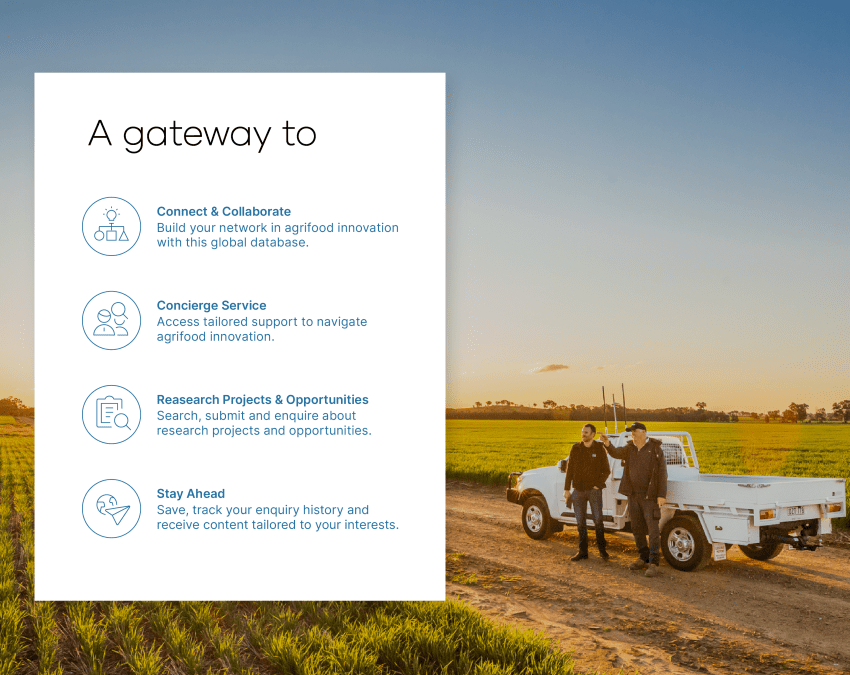
DAFF program encourages innovators to ‘sniff out’ biosecurity pests
A future-focused partnership, between Australian agritech startup, RingIR and the Department of Agriculture, Fisheries and Forestry (DAFF) under its Biosecurity Innovation Program (BIP) will investigate whether its tech can be used to protect Australian agriculture from hitchhiker pests. Applications for the 2023-24 DAFF BIP funding round are now open for innovators with bold ideas, like RingIR.

Australian engineers from global company RingIR will visit the US Department of Agriculture in Boston next month, to test whether their revolutionary technology can be used to ‘sniff out’ pests that attach themselves to containers or other cargo (known as hitchhiker pests).
RingIR’s patented vapour detection technology enables it to identify individual gases in the environment through their unique chemical ‘fingerprint’ and can be used to measure fumigants in shipping containers, vapour leaks and mine ventilation, as well as harmful gases in military operations.
The company will now test whether its Multi-Hazard Detector (MHD2000) can pick up the scent of agricultural pests such as the khapra beetle and varroa mite, after teaming up with the Australian Department of Agriculture, Fisheries and Forestry (DAFF) under its Biosecurity Innovation Program (BIP).
DAFF is calling for nominations for the next round of the annual BIP, which identifies and funds innovative ideas to boost the effectiveness of Australia’s national biosecurity system.
The Program has funded 120 projects to date, with 24 projects being delivered in the 2022-23 financial year. DAFF Director of Research and Innovation, Biosecurity and Compliance Group, Jessica May, said the annual budget is around $5 million and the BIP typically funds 20-25 projects a year.
“Applications are considered on their individual merits, but must have a solid biosecurity focus. Last year over 100 expressions of interest were received,” said Jessica.
“Any ideas that companies bring to the BIP remain theirs. Companies are still free to pursue any other commercial opportunities outside DAFF and keep their IP.”
- Do you have an innovative idea to enhance Australia’s biosecurity system? Applications are open for the 2023-24 DAFF BIP funding round, here via growAG. and close 11.00pm AEST Friday, 2 December 2022
Related organisations


BIP a ‘very supportive, collaborative’ process
RingIR’s General Manager Australia, Lisa Linssen, said accessing the Biosecurity Innovation Program has been a very positive experience for her company and she’d strongly recommend others to apply.
It’s given us the ability to look at issues and challenges from a number of different angles and seek the on-ground perspective of biosecurity inspector groups and scientists with a view to commercialisation of the technology,” said Lisa.
“BIP put together a team of their experts and initially met via Zoom several times with our engineers and team, to decide what we wanted out of the partnership and set milestones and performance measures to work towards. DAFF staff have been very supportive, open and collaborative, and the networking has been excellent.”
RELATED: The secret life of bees and tracking real-time pollination
The RingIR technology is being trialled in two projects funded by the BIP – one looking at the detection of harmful fumigants and the other to detect pests of biosecurity concern.
In 2020-21, the project looking at harmful fumigants confirmed the RingIR technology could detect three fumigants of biosecurity concern – methyl bromide, sulfuryl fluoride and phosphine. The project is continuing in 2022-23 to reduce the size of the prototype so it is portable, efficient and easy to use for staff inspecting shipping containers.
-crop-672x478.png)
Pests of concern identified by technology
In 2021, the project looking at pests of biosecurity concern confirmed the RingIR technology could detect pests such as the stink bugs, moths and beetles in a laboratory environment.
It was found that RingIR technology could:
- identify the presence of the pest
- differentiate between species (e.g. moth versus beetle)
- differentiate between species of the same group (e.g. between a carob and codling moth)
- determine if the pest was dead or alive.
“We’re now looking at about 10 exotic pest species of concern chosen by the BIP working group, including the khapra beetle, brown marmorated stink bug (BMSB) and varroa mite, and these are being supplied in the lab by our USDA colleagues,” Lisa explained.
“We place several bugs in a beaker, leave them to generate odour, take a sample of the air in the beaker and process it. The next step will be to put bugs and beetles into backpack or shipping container scenarios and see if we can sniff them out in real life.”
Biosecurity program aims to identify and develop ‘bold new ideas’
DAFF Director of Research and Innovation, Biosecurity and Compliance Group, Jessica May, said the RingIR innovation is just one example of BIP’s work with innovators from the business sector, universities and domestic and international research entities to identify and develop bold new ideas to make Australia’s biosecurity system highly effective.
“Through focussing on key areas of automation; data and intelligence; surveillance, diagnostics and screening; risk analysis and communication and collaboration, we can make sure our biosecurity system is more effective and efficient,” said Jessica.
BIP provides funding and project support for ideas that will improve biosecurity screening of goods and passengers; enhance our early detection capabilities beyond ports; and improve the effectiveness and efficiency of the national biosecurity system in a changing environment.
RELATED: Ceres Tag launches reusable smart ear tag for US market expansion
Biosecurity projects to improve detection and speed up clearance times

Current BIP projects include a mobile phone app that uses artificial intelligence to quickly identify the BMSB, which is a National Priority Plant Pest. DAFF is partnering with the Commonwealth Scientific and Industrial Research Organisation (CSIRO) to deliver the project, which aims to be a low cost, automated, portable solution to assist in the identification of BMSB and other stink bug species by biosecurity officers. Some initial work has been undertaken to also use Artificial Intelligence (AI) for bees.
DAFF has also partnered with the University of Canberra to establish the National Environmental DNA (eDNA) Reference Centre, which will develop and validate the eDNA technology. The centre is developing rapid, easy and portable eDNA molecular detection tools for species of biosecurity and environmental concern. The eDNA technology will be validated and applied as appropriate for DAFF’s initiatives and response activities such as the Khapra Surge Response. DAFF has also been trialling the technology to detect Varroa mite in surveillance of feral beehives in the Port of Newcastle.
Do you have an innovative idea to enhance Australia’s biosecurity measures? Learn more about the DAFF BIP here via growAG.. Applications for the 2023-34 round of BIP funding close 11.00pm AEST Friday, 2 December 2022.
-crop-850x675.png)
Looking for engagement?
Showcase your commercialisation opportunity today.
Talk to our team to discuss how growAG. can connect your innovation to industry.
Have questions? Find answers to our most frequently asked questions on research projects, commercial opportunities, organisations and more.
